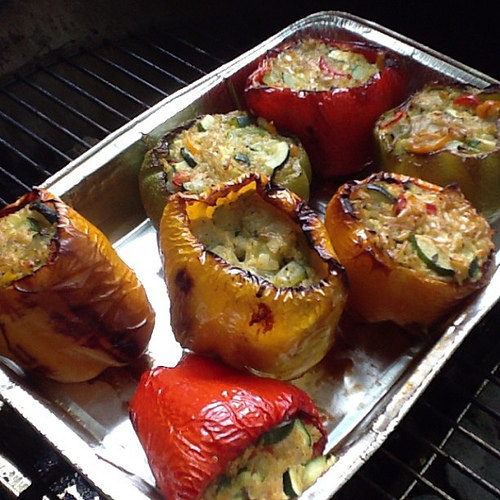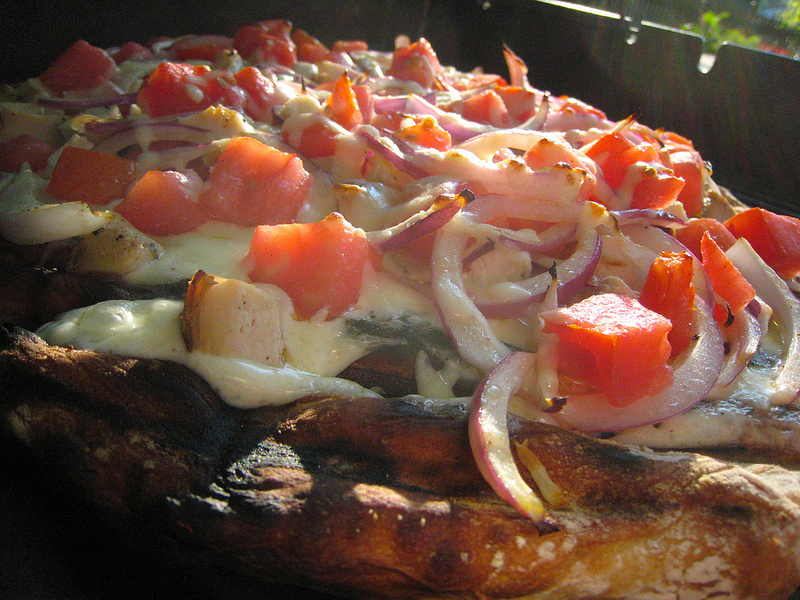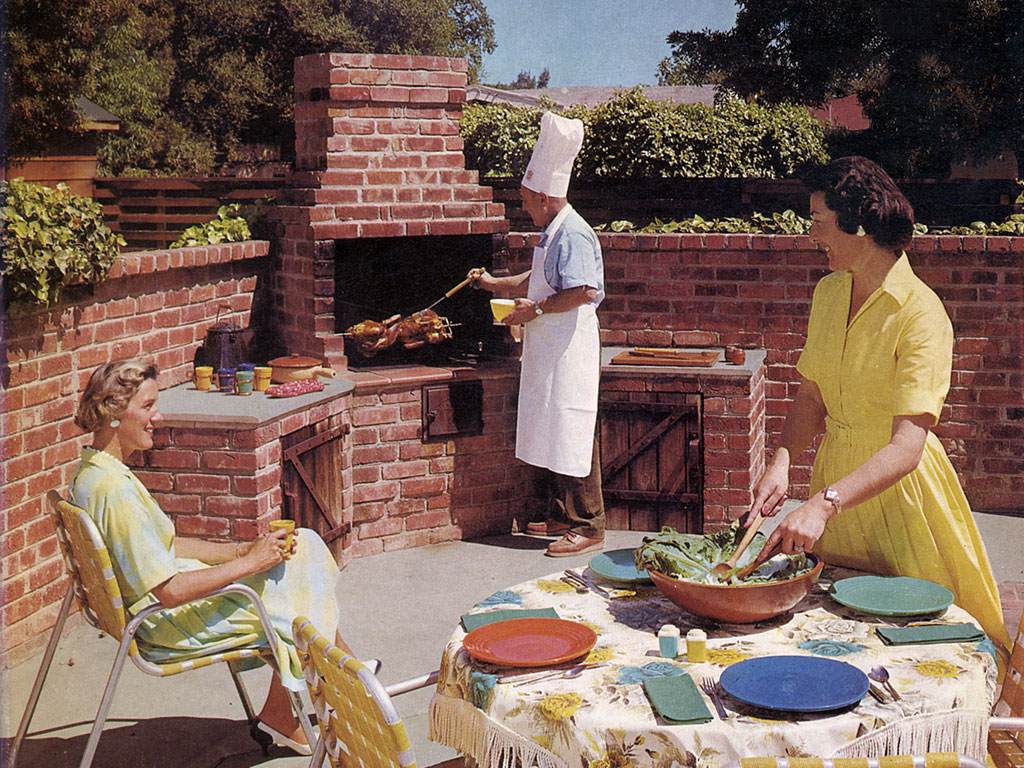
We’ve grilled several batches of stuffed peppers this Summer, but these were my favorites. I grilled the peppers for a bit to soften them up, then my wife stuffed them with a combination of quinoa and sauteed zucchini with other delightful veggies before we put them back on the grill to warm. I’m honestly not sure what all she put into them. I almost grilled them too long prior to stuffing, so we had to be careful not to tear the flesh before we were ready to serve them.




